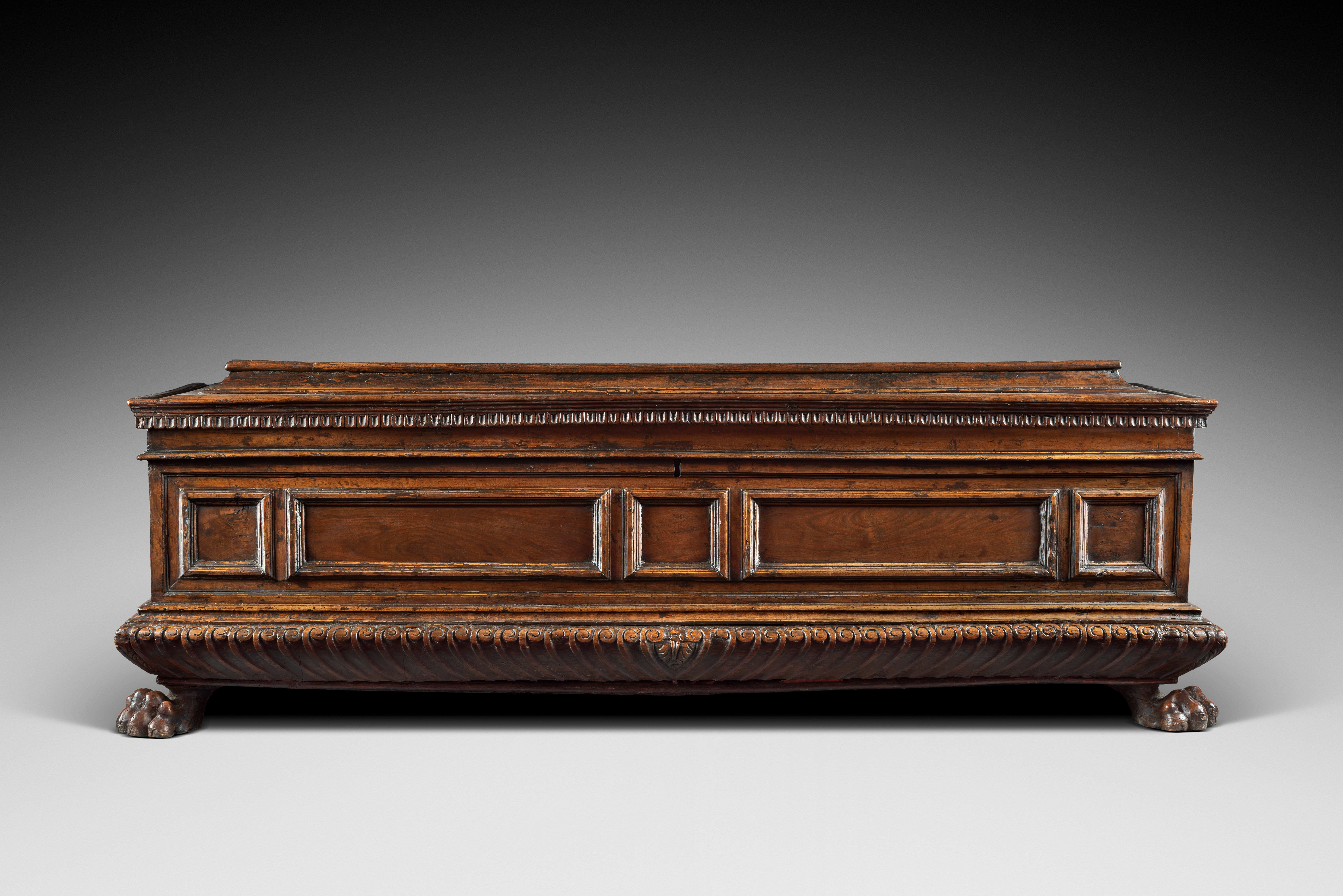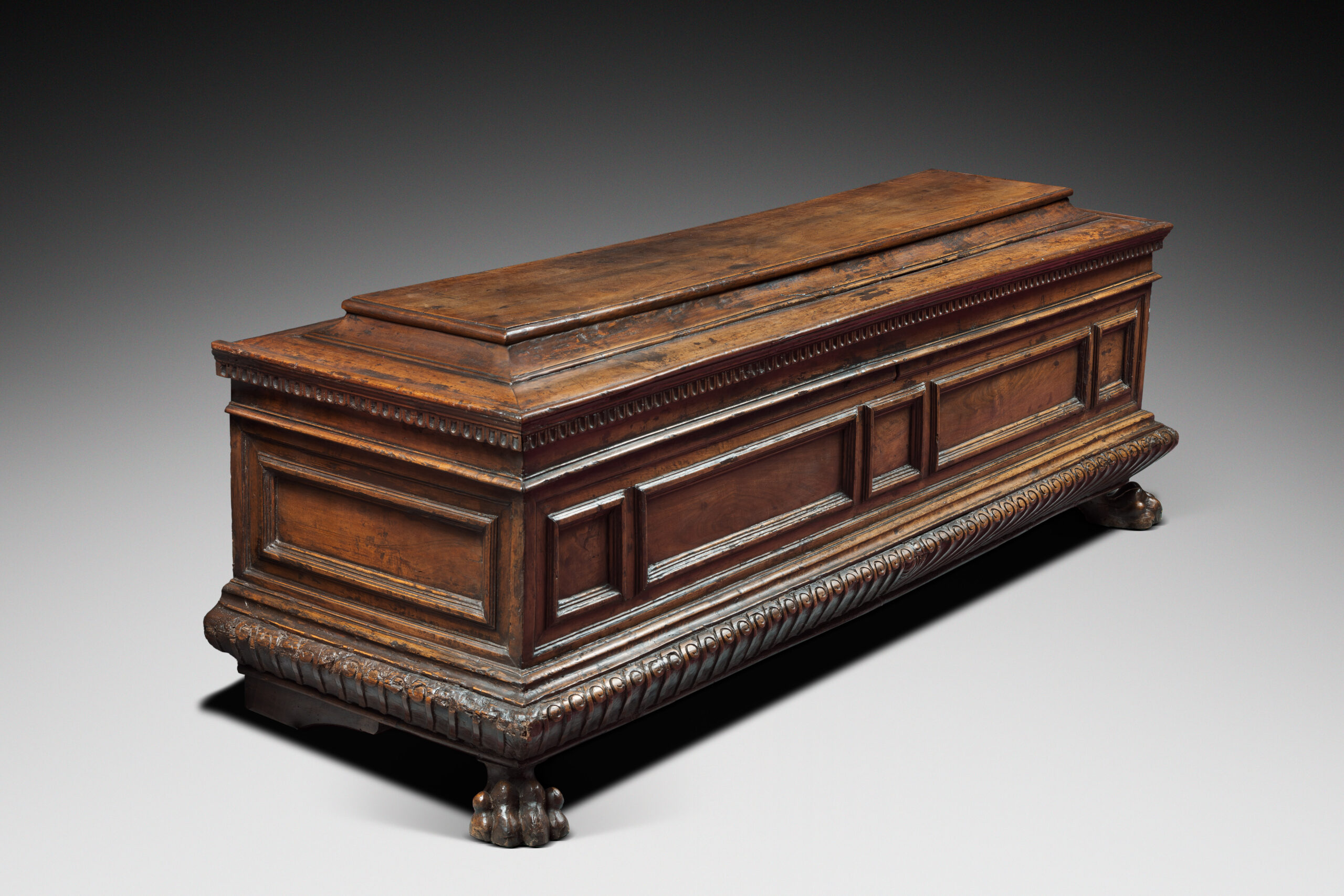Description
In the late fifteenth century and during the whole sixteenth century, chests are the greatest treasure of all Italian furniture. In this period they are usually made of walnut wood.
This cassone remarkably sober in its ornementation stand on a gadrooned base resting on lion feet.
Its front is divided into an alternating band of three squared and two rectangular panel framed with carved projecting moulds.
These moulds, rarely seen in fifteenth century designs, did not become general until after the second decade of the sixteenth century.
The rectangular lid is underlined with a channels frieze. The raised top is molded.
Cassone are usually given to newlywed as a symbol of the union of two families. It contains the wife’s personal items.
The sarcophagus form of this cassone is very characteristic of the end of the 15th-beginning of the 16th century.
A similar cassone is displayed in the Pushkin Museum in Moscow, Inv. No. 168.

Another is on display at the Castello di Vincigliata, not far from Florence (William M. Odom, A History of Italian furniture from the fourteenth to the early nineteenth centuries, The Country Life Press, Garden City, New York, 1918, p. 129, fig. 114).

LITERATURE
Liubov Faenson, Cassone italiani delle Collezioni d’arte dei Musei Sovietici, Perugia, 1983, n° 81 et 82
William Macdougal Odom, A History of Italian furniture from the fourteenth to the early nineteenth centuries, The Country Life Press, Garden City, New York, 1918 (p. 129, fig. 114)




